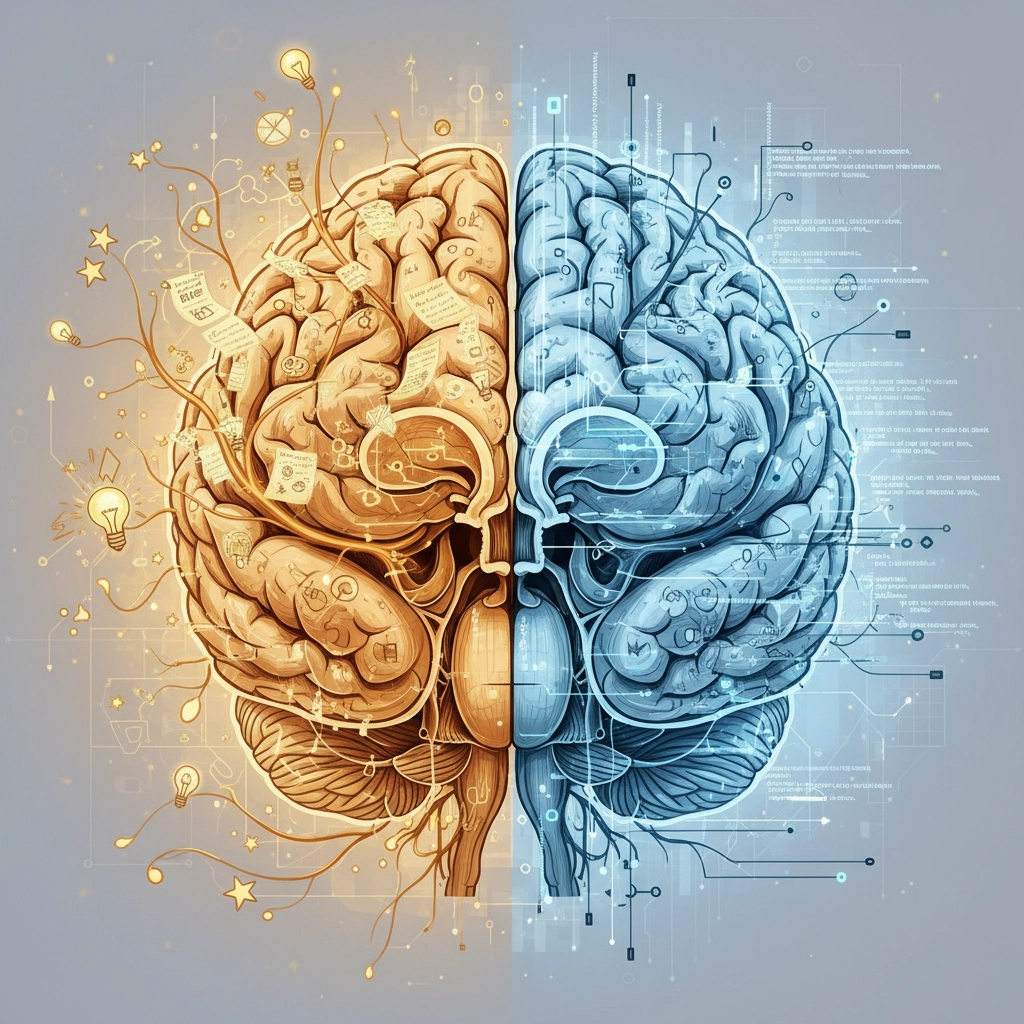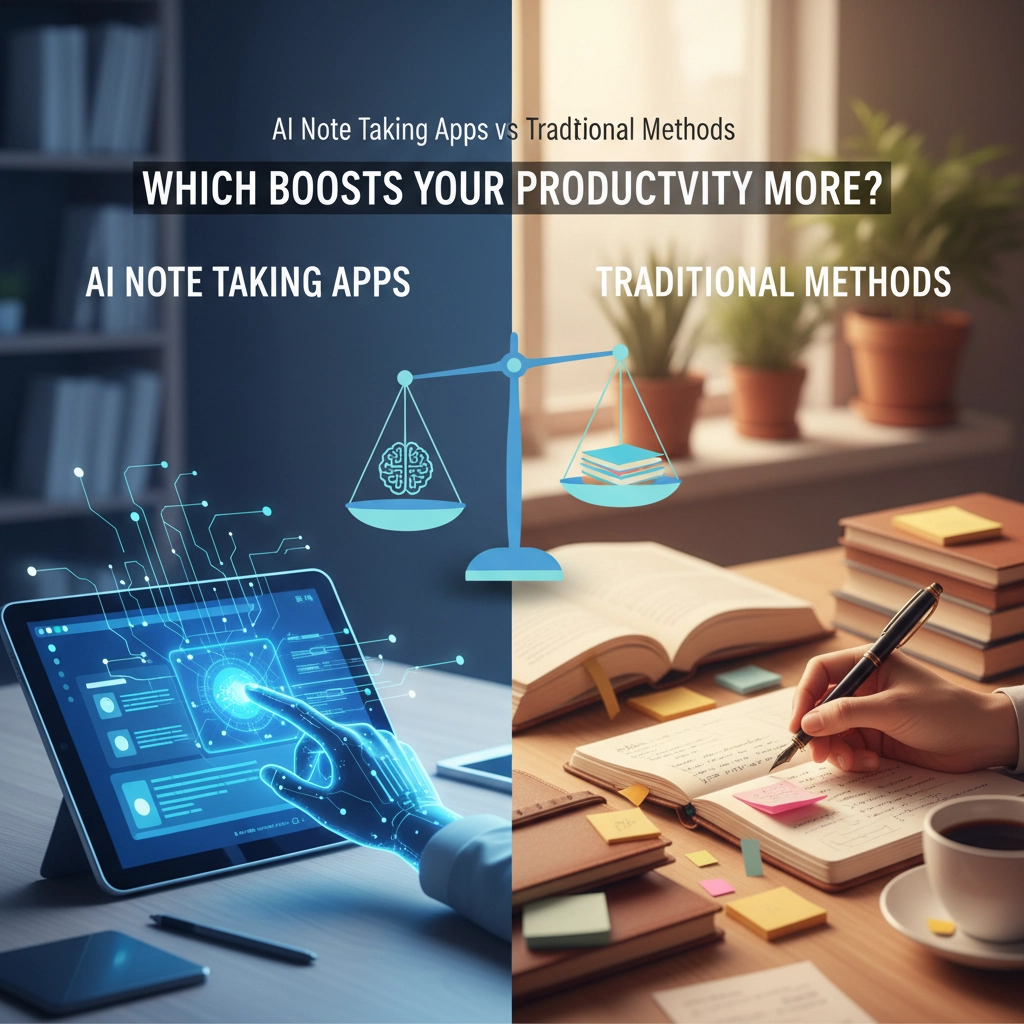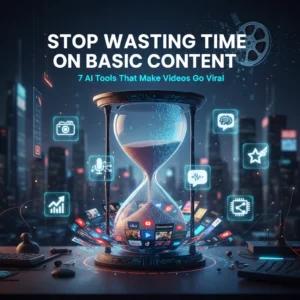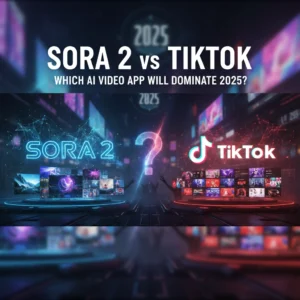Ever wondered why some people swear by their leather-bound notebooks while others can't function without their AI-powered note apps? Here's a wild fact: the average knowledge worker spends 2.5 hours daily just taking and organizing notes. That's over 10 hours per week – basically a part-time job dedicated to scribbling and typing.
The productivity battle between AI note-taking apps and traditional pen-and-paper methods isn't just about personal preference anymore. With AI tools claiming to boost productivity by up to 40%, it's time to dig into what actually works in 2025.
The Speed Game: When Every Second Counts
Let's start with the obvious – speed. If you're still handwriting notes in meetings, you're operating at 13-19 words per minute. That's painful when your boss is rattling off action items faster than you can write "quarterly projections."
Regular typing bumps you up to 38-40 words per minute, but AI voice-to-text transcription? We're talking 120-160 words per minute with 95% accuracy. That's nearly 10x faster than handwriting.

But speed isn't just about capturing words. AI tools automatically pull out action items, create summaries, and even generate follow-up questions. While you're still figuring out how to spell "synergistic," the AI has already organized your entire meeting into neat, searchable categories.
Traditional note-takers spend another 30-45 minutes after each meeting cleaning up their scribbles and trying to remember what "implement Q4 strat" actually meant. AI apps? They're done the second you stop talking.
Organization: The Make-or-Break Factor
Remember hunting through three different notebooks trying to find that one brilliant idea from two months ago? Traditional notes are like having a library where someone randomly threw books on shelves and forgot to make a catalog.
AI note-taking apps use something called semantic search – fancy words for "it actually understands what you meant, not just what you typed." Looking for notes about budget planning? The AI finds everything related to finances, costs, and spending, even if you never used the word "budget."
Here's where it gets really interesting:
- Traditional filing: You decide where everything goes (and hopefully remember later)
- AI organization: Machine learning spots patterns you'd never notice
- Search time: 35% faster with AI semantic search vs. manual scanning
- Cross-referencing: AI automatically links related concepts across different notes
- Collaboration: Real-time syncing vs. "Hey, can you photocopy your notes?"
The organizational superpowers extend beyond just finding stuff. AI tools create automatic study guides, extract meeting summaries, and even suggest when you haven't reviewed important information in a while. Try getting your spiral notebook to do that.
The Memory Paradox: When Slower Might Be Better
Here's where things get interesting, and traditional note-takers start smirking. Despite all the speed and organization benefits, handwritten notes might actually be better for your brain.

When you write by hand, your brain works harder. You can't transcribe everything word-for-word (thank goodness), so you're forced to process information and decide what's actually important. This mental filtering creates stronger neural pathways and better memory retention.
Students taking handwritten notes consistently outperform their laptop-toting classmates on tests. The slower pace forces you to engage with the material instead of becoming a mindless transcription machine.
But here's the plot twist – maybe that's exactly what we want for different situations. In a fast-paced business meeting, you want to capture everything and process it later. When you're learning complex concepts or brainstorming creative solutions, the slower, more thoughtful approach of handwriting might be your secret weapon.
My friend Sarah, a marketing director, discovered this the hard way. She switched to an AI note-taking app for everything and loved the efficiency. But when she started using it for strategic planning sessions, she realized she wasn't thinking as deeply about the problems. Now she uses AI for information capture and switches to pen and paper when she needs to think through complex challenges.
So Which One Should You Choose?
The honest answer? It depends on what you're trying to accomplish. Here's the breakdown:
Go with AI note-taking apps when you need:
- High-volume information capture (meetings, lectures, interviews)
- Quick searchability across massive amounts of notes
- Team collaboration and real-time sharing
- Automatic organization and task extraction
- Multi-device synchronization
Stick with traditional handwritten notes when you want:
- Deep learning and memory retention
- Creative brainstorming and concept development
- Distraction-free thinking time
- Privacy (no cloud storage concerns)
- That satisfying tactile experience of pen on paper

The productivity champions aren't necessarily picking sides – they're using both strategically. AI tools for capturing and organizing the flood of daily information, handwritten notes for the important stuff that needs to marinate in your brain.
Think about your typical workday. You're probably dealing with both scenarios. Information-heavy meetings where you need to capture everything? AI app. Strategic thinking session where you need to connect dots and generate insights? Break out the notebook.
The real productivity boost might come from knowing when to use which tool. It's like having both a sports car and a pickup truck – they're built for different jobs, and trying to use one for everything limits your effectiveness.
What's your current note-taking setup, and are you using the right tool for the job you're trying to accomplish?







